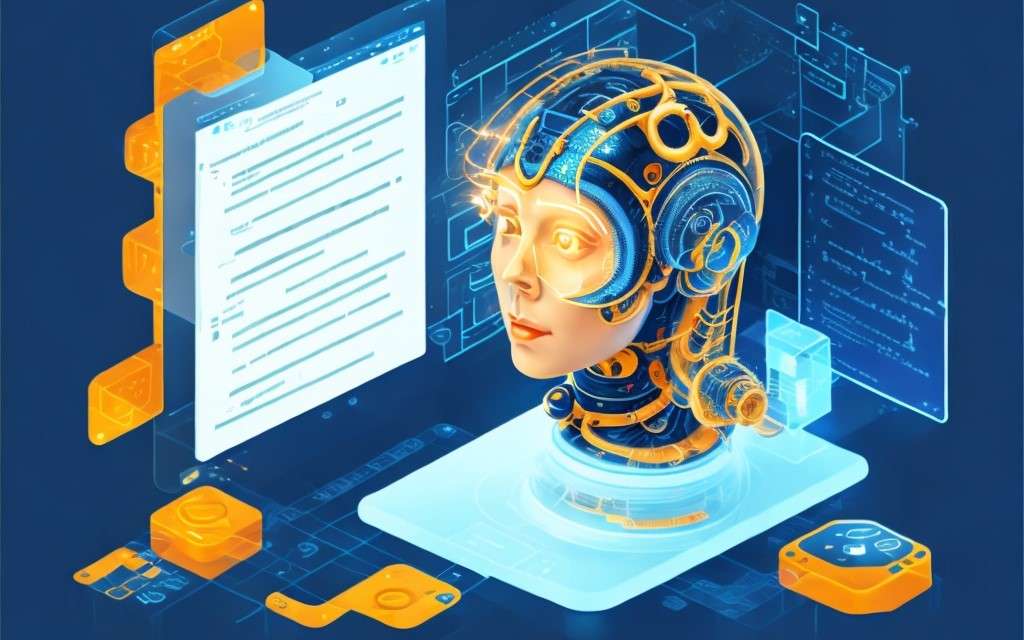Emerging AI Trends in Machine Learning, Data Science and Artificial Intelligence

Artificial Intelligence (AI) has carved a prominent place for itself in the technology sector over the past decade, with transformative impact across a myriad of industries. This dynamic field continues to evolve at a breathtaking pace. In this insightful guide, we delve into the major AI trends that are set to redefine businesses and day-to-day life.
The Power of Natural Language Processing (NLP) in AI
Natural Language Processing (NLP) is a crucial component of AI that empowers machines to comprehend and interpret human language, thereby catalyzing new applications for AI.
Exploring NLP and Practical Use Cases
NLP is a revolutionary aspect of AI. It enables machines to analyze, organize, translate, and employ text, greatly amplifying the efficiency of global business operations. As human-readable text data proliferates, NLP serves as an effective tool to scrutinize and glean insights from this vast sea of information.
Unleashing NLP Across Sectors
NLP finds use in diverse sectors, from retail and marketing to finance and law. Businesses like AI text analysis tool MonkeyLearn and contract analysis platform BlackBoiler leverage NLP to enhance operations. With the ongoing exponential increase in text data, NLP’s role in AI becomes ever more vital.
Escalating Demand for Data Analysts
Data analysts have witnessed an explosive demand in recent years. As data generation continues to grow exponentially, businesses require experts to dissect and interpret this information, leading to a dramatic surge in demand for data analysts.
Data Analysts: The Human Element in Data Management
Despite significant strides in data analytics programs, human expertise remains critical to data management. Data often comes in unstructured and messy formats, necessitating human intervention to make it usable for machine learning algorithms. Additionally, AI-generated results require human interpretation to validate their accuracy and reliability.
Check our article about Machine Learning, Deep Learning, AI and Data Analysts courses to elevate your skills and stay competitive in a job market that will be shaken to the ground.
The Future Trajectory of Data Analysis
With increasing data volume and complexity, the need for data analysts will continue to escalate. The future of data science likely lies in a symbiotic blend of human and machine effort, with augmented intelligence and human-in-the-loop artificial intelligence emerging as significant trends.
The quality and quantity of data will lead to new AI Trends in Machine Learning to be developed and new use cases will emerge in different industries, as the current understand of AI is only the tip of the iceberg.
The Surge in All-In-One Data Solutions

The market has seen a meteoric rise in demand for comprehensive AI solutions. Companies are shifting away from piecing together disparate parts of the data science process. Instead, they seek all-encompassing solutions that handle the complete cycle, from data cleaning to model development.
These AI and Machine learning trends will create massive opportunities for entrepreneurs that can provide solutions to the new problems arising in this unchartered territory.
H2O.AI – A Comprehensive Solution
H2O.ai is a leading open-source platform for machine learning and artificial intelligence. It provides a user-friendly interface for data scientists and analysts to build, train, and deploy machine learning models at scale.
H2O.ai offers a suite of tools and platforms that simplify and accelerate the process of developing machine learning models, including H2O-3, which is a widely-used open-source software for building and deploying machine learning models, and H2O Driverless AI, which automates the entire data science workflow from data preparation to model deployment.
Kaggle: The Nexus of the Data Science Community
Kaggle has grown enormously to become the world’s largest data science community, boasting over 8 million users spanning 194 countries. It has emerged as a favorite platform for budding data scientists embarking on their machine learning journeys.
What Makes Kaggle Stand Out?
Kaggle offers a collaborative platform where users can share datasets, participate in competitions to solve data science problems, and join forces with other data scientists to build models. It offers unparalleled learning and professional growth opportunities, attracting data scientists from around the globe.
Kaggle’s Global Impact
The influence of Kaggle extends beyond its platform. Its hundreds of competitions have fueled breakthroughs in data science, with academic papers based on Kaggle competition outcomes. As Kaggle expands, it is set to play a pivotal role in advancing data science.
Python: Data Science’s Preferred Language

Python has gained immense popularity as the go-to language for data analysis, owing to its user-friendly structure, comprehensive data science libraries, and supportive community. It’s no wonder that Python is poised to become the most popular programming language by 2025.
The Python Phenomenon
Python’s ascendance can be attributed to its simplicity and versatility. It hosts an array of free libraries, such as Pandas for data manipulation and Scikit-learn for machine learning, making it a favored option for both novice and veteran data scientists.
Python Beyond Data Analysis
Python’s applications are not confined to data analysis. From the development of blockchain applications and automating tasks to creating web applications and performing web content extraction using Selenium, there seems to be no limit to Python’s multifaceted capabilities. Given its rapid growth and broad utility, Python is destined to dominate the data science landscape in the foreseeable future.
Become a Python Expert with a collection of curated AI Courses to kick start your educational journey
Consumer Data Protection: A Rising Priority within AI Trends
With significant increases in consumer awareness about data privacy, particularly in light of major data breaches and scandals, the demand for rigorous data privacy regulations and practices has intensified.
Data Privacy and Adversarial Machine Learning: A Global Concern
Tech giants like Facebook and Google have come under intense scrutiny for their data privacy practices, which has amplified consumer concerns about how their data is collected, used, and shared.
The Path to Data Privacy Regulation
Governments and regulatory bodies worldwide are adopting measures to safeguard consumer data privacy. Legislation such as the California Consumer Privacy Act has come into effect, elevating data privacy as a vital consideration for businesses and data scientists. For one, businesses can opt to use first party data instead of third-party ones to provide better data security to their customers.
Adversarial Machine Learning: An Emerging Challenge
Adversarial machine learning, where attackers deliberately feed data into a machine learning model to cause errors, poses a significant challenge for AI developers.
Decoding Adversarial Machine Learning
Adversarial machine learning is essentially a ‘digital optical illusion’ for machines. Attackers manipulate inputs to machine learning models, deceiving them into making erroneous predictions or classifications.
Counteracting Adversarial Attacks
Data scientists are designing defensive strategies against adversarial attacks, like adversarial training, where models are trained on deceptive examples to prepare them for such attacks. As adversarial machine learning becomes more common, developing robust defenses will be a key area of focus in AI.
Learn more about the Ethical Implications in building better and safer Artificial Intelligence for the greater good of humanity.
AI-Generated Synthetic Media: A Boon or a Bane?
AI’s ability to create or manipulate synthetic media, commonly known as deepfakes, has seen a remarkable surge in interest. Powered by machine learning advancements, this technology can alter audio, video, and even text to mimic another entity, giving rise to both potential applications and concerns.
Is one of the fastest growing Artificial Intelligence trends that could have dangerous implications for the society at scale, besides the large range of benefits.
Deepfakes: A Double-Edged Sword
Deepfakes have opened a Pandora’s Box of opportunities and challenges, as one of the latest AI Trends. While this technology can serve benign purposes like generating voiceovers for films or creating interactive digital characters, its potential misuse is a cause for alarm. Fraudsters have already exploited deepfake technology, causing significant financial losses.
Moreover, the emergence of ‘voice phishing’, where attackers use AI to mimic a person’s voice for deceptive purposes, has raised serious data privacy and security concerns.
One of the popular AI tools for Deepfakes that gained increased popularity is FakeYou, which allows voice cloning and usage of popular voices from celebrities to politicians to your favorite cartoon character.
Navigating the Deepfake Dilemma: A Herculean Task

In response to the rising misuse of deepfakes, governments and regulatory bodies worldwide are scrambling to implement effective regulations. Balancing the encouragement of innovation and the prevention of misuse, however, is a daunting task. Efforts are underway to develop technology capable of detecting deepfakes, marking a crucial step in mitigating this emerging threat. This is certainly one of the Top AI Trends in Machine Learning in order to improve the accuracy of detecting Deep Fakes across the web.
Conclusion
The emerging AI trends underline the transformative potential of this technology across diverse industries and our everyday lives. As artificial Intelligence evolves, it promises to usher in unparalleled changes and opportunities, making it imperative for businesses to stay informed about these trends. While the potential of AI is immense, it comes with significant risks and challenges, calling for a balanced approach to harnessing this powerful technology. As this break through tech prepares to redefine the future, comprehending and navigating these opportunities and challenges becomes increasingly crucial.
- What is Natural Language Processing (NLP)?
- NLP is a branch of AI that enables machines to understand, interpret, and utilize human language. This technology is driving the creation of new AI applications across various sectors.
- Why is there a high demand for data analysts?
- With the exponential growth of data, businesses require experts to parse, analyze, and interpret this information, making data analysts highly sought after. They play a crucial role in structuring data for machine learning algorithms and interpreting AI-generated results.
- What are all-in-one data solutions?
- All-in-one data solutions are comprehensive platforms that handle the entire data science process, from data cleaning to model development. They simplify the process by integrating all necessary functions into a single product.
- What is Kaggle and its importance in the data science community?
- Kaggle is the world’s largest data science community, offering an interactive platform where users can share datasets, participate in competitions, and collaborate on model building. It is influential in advancing the field of data science and offers unparalleled learning opportunities.
- Why is Python preferred for data science?
- Python has surged in popularity due to its user-friendly structure, extensive data science libraries, and supportive community. Its versatility and simplicity make it an attractive option for both novice and veteran data scientists.
- What is adversarial machine learning?
- Adversarial machine learning involves manipulating the inputs to machine learning models to trick them into making incorrect predictions or classifications. It poses a significant challenge for AI developers.
- What are deepfakes and why are they a concern?
- Deepfakes are synthetic media created or manipulated using AI. While they have potential applications, such as generating voiceovers for films, their misuse for fraudulent activities raises significant concerns about data privacy and security.
- What is the significance of data privacy regulations?
- As consumer awareness about data privacy increases, there’s a growing demand for stringent data privacy regulations. These regulations protect consumer data and make data privacy a critical consideration for businesses and data scientists.




